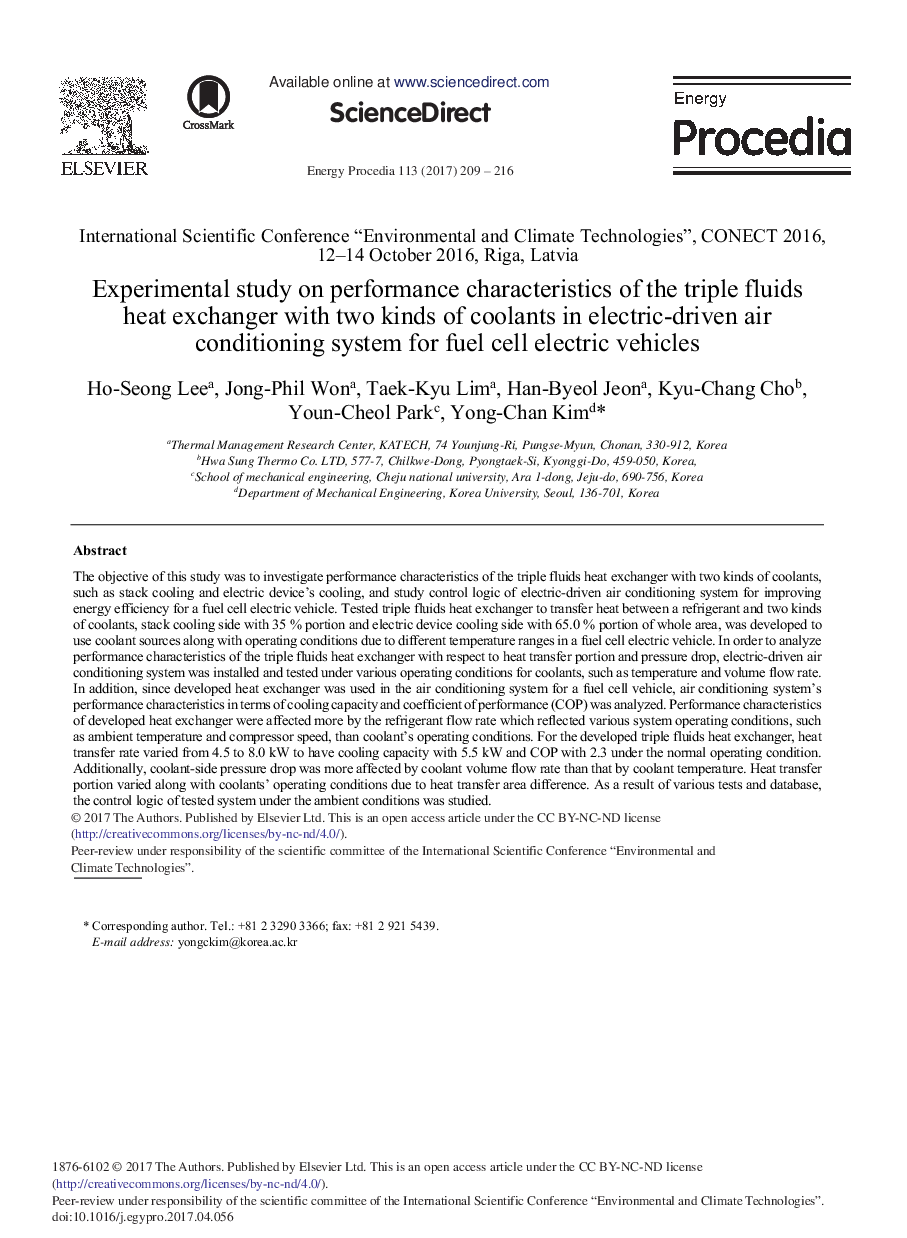| Article ID | Journal | Published Year | Pages | File Type |
|---|---|---|---|---|
| 5445649 | Energy Procedia | 2017 | 8 Pages |
Abstract
The objective of this study was to investigate performance characteristics of the triple fluids heat exchanger with two kinds of coolants, such as stack cooling and electric device's cooling, and study control logic of electric-driven air conditioning system for improving energy efficiency for a fuel cell electric vehicle. Tested triple fluids heat exchanger to transfer heat between a refrigerant and two kinds of coolants, stack cooling side with 35% portion and electric device cooling side with 65.0% portion of whole area, was developed to use coolant sources along with operating conditions due to different temperature ranges in a fuel cell electric vehicle. In order to analyze performance characteristics of the triple fluids heat exchanger with respect to heat transfer portion and pressure drop, electric-driven air conditioning system was installed and tested under various operating conditions for coolants, such as temperature and volume flow rate. In addition, since developed heat exchanger was used in the air conditioning system for a fuel cell vehicle, air conditioning system's performance characteristics in terms of cooling capacity and coefficient of performance (COP) was analyzed. Performance characteristics of developed heat exchanger were affected more by the refrigerant flow rate which reflected various system operating conditions, such as ambient temperature and compressor speed, than coolant's operating conditions. For the developed triple fluids heat exchanger, heat transfer rate varied from 4.5 to 8.0Â kW to have cooling capacity with 5.5Â kW and COP with 2.3 under the normal operating condition. Additionally, coolant-side pressure drop was more affected by coolant volume flow rate than that by coolant temperature. Heat transfer portion varied along with coolants' operating conditions due to heat transfer area difference. As a result of various tests and database, the control logic of tested system under the ambient conditions was studied.
Keywords
Related Topics
Physical Sciences and Engineering
Energy
Energy (General)
Authors
Ho-Seong Lee, Jong-Phil Won, Taek-Kyu Lim, Han-Byeol Jeon, Kyu-Chang Cho, Youn-Cheol Park, Yong-Chan Kim,
